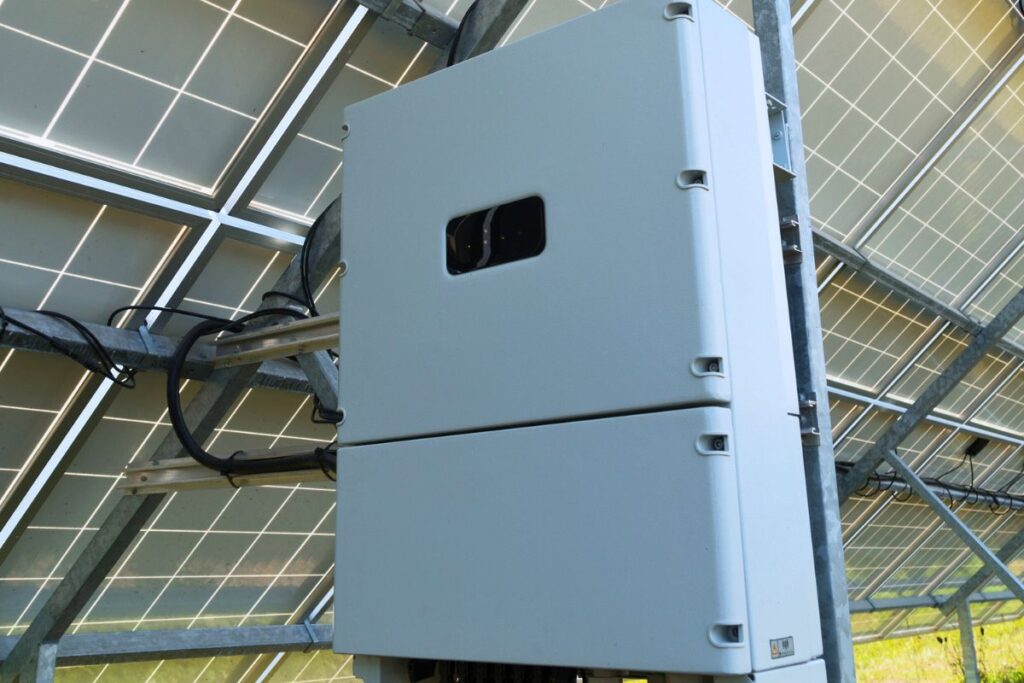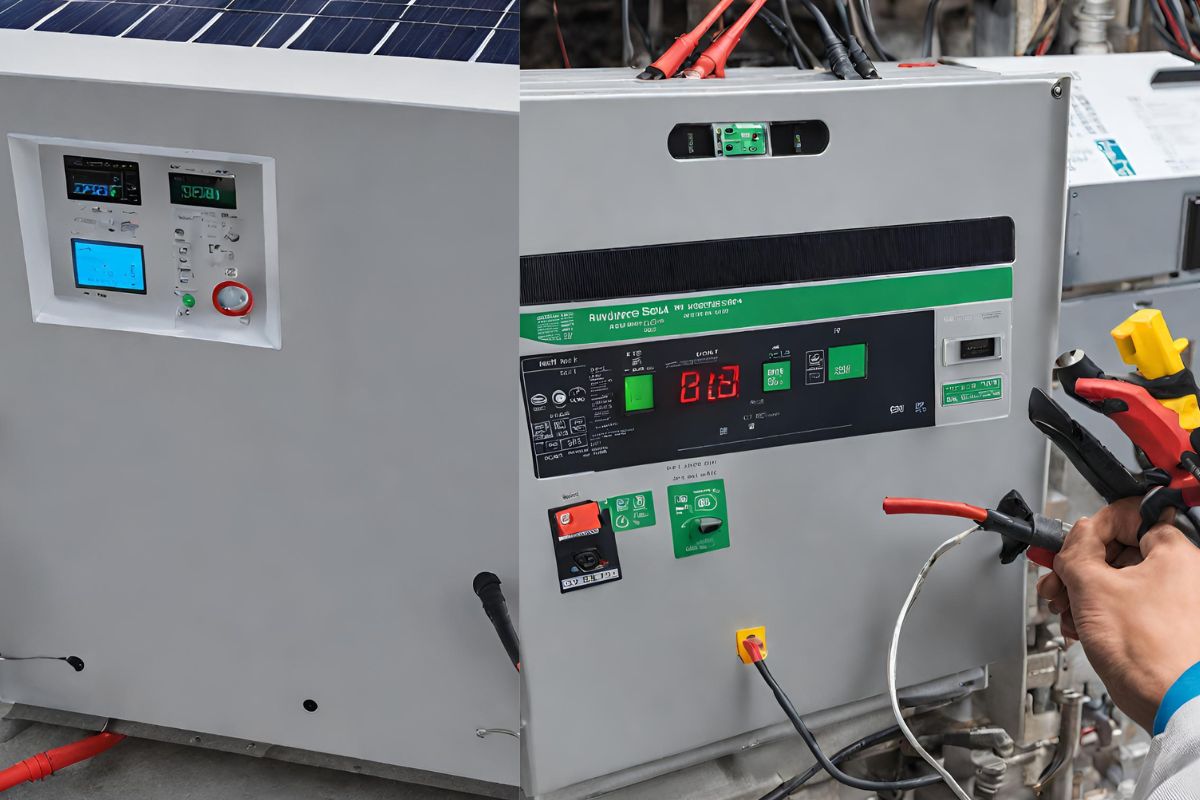Do you want to know what is an off grid solar inverter? Yes, I want to know what an off-grid solar inverter is. Off-grid inverters use solar energy from panels to sustain the electrical current in your home, using the battery during nighttime hours.
Off-grid inverters regulate direct and alternating currents, which can be utilized within your household to substitute the conventional power source. In this article, I will tell you how to choose the best off-grid inverter.
Let’s get started.
What Is Off Grid Solar Inverter
The off-grid solar inverter is a demanded device that helps convert sunlight into current and is used to power your home. And it can stay running day and night, independently of the traditional grid services.
If you want to buy a solar system for your home, I suggest you buy an off-grid solar inverter, and you will see why later in this article. It plays a key role in ensuring your solar system works like a charm.
Now, let’s get into IT. In a normal setting, the solar panels receive energy from the sun to generate direct current, which is stored in a battery.
But to send current to your home, you will need an alternative current; that is where the inverter comes in – to convert it from DC to AC.
The off-grid inverter is specially designed for people who want to be their own self-reliance on power generation.
It works with solar panels and batteries to keep your home humming day and night.
Why is this so great?
Well, it’s perfect for anyone who wants to power their home with solar energy.
Definitely, all your home appliances need electrical current to power them, especially if you want them running 24/7.
The off-grid inverter makes sure you’ve got the juice you need without causing your electricity bill to skyrocket.
And here’s the cool part: your solar panels aren’t tied to the grid in this setup. Nope, they’re doing their own thing, powering your home independently.
The electrical system works like a champ, running on battery power or directly feeding your gadgets without any connection to the grid.
All the energy your solar panels produce? It goes straight to keeping your house powered up.
So, the bottom line is that the off-grid inverter is your go-get. They are designed for efficiency, drawing power from the battery and converting it from DC to AC.
What Is The Best Off-Grid Solar Inverter?
The best off-grid solar inverters should have great features that serve their purpose.
Off-grid solar systems demand specialized inverters and substantial battery systems to sustain ample power for at least two days.
On the other hand, grid-connected crossover systems utilize more economical crossover batteries, requiring a battery size sufficient for 5-10 hours of usage, depending on your needs.
It converts the direct current produced by your solar panels into alternating current, which may be injected into the network and utilized to power your home devices directly.
Before choosing an off-grid solar inverter, there are several factors to consider.
You may select the finest off-grid solar inverter depending on your system and inverter requirements.
Here are some elements to advise you:
Inverter size: In this example, we are referring to the power of the inverter rather than its physical size.
To decide the appropriate size inverter for your needs, sum up the wattage and voltage of your appliances if they were all turned on simultaneously.
Let’s look at some of the greatest solar inverters on our list.
1. Kostal Solar Electric Solar Inverter.
Kostal Solar Electric is another major maker of solar inverters.
It has an outstanding reputation, owing largely to its best-seller, the PIKO MP Plus inverter.
The latter allows you to receive free solar system monitoring using the Kostal Solar application.
You may view your production statistics over several time periods (day, week, month, or current year) and access historical data for your installation.
Model: Piko MP Plus Injection: Single phase Maximum output power is 11kVA, with a maximum yield of 97.4% and production monitoring—dimensions: 657 x 399 x 222mm.
Kostal Solar Electric is a part of the German KOSTAL company, which manufactures electrical systems and connections.
It has been making inverters for about 15 years and benefits from the KOSTAL group’s unparalleled expertise.
2. Nitram’s Cyber Power Inverter.
This off-grid solar inverter is durable and waterproof, but most importantly, it is light and has a small casing.
Aside from its high efficiency (93%) and short transmission time, it is an extremely secure device:
Using a clean sine wave guarantees that your gadgets receive more power. This not only increases their performance but also extends their longevity.
It is protected from short circuits, overloads, and overheating. This makes it a very robust and dependable inverter.
Its primary benefit is its energy-saving technology. Yes, it can turn off a device’s power on its own if it is in standby mode. This way, you don’t spend energy on anything.
3. The MultiPlus II Inverter By Victron Energy
The second inverter from Victron Energy is more powerful and efficient than the first. Yes, it has an extremely high conversion efficiency).
However, whoever says more strong implies more intimidating and heavier. Don’t worry; several positives compensate for this one drawback:
- It may be used both off-grid and on-grid to prevent power interruptions.
- PowerControl technology makes this an extremely powerful battery charger.
- It is possible to connect it by installing the Venix GX control panel.
- It has adaptive charging technology.
4. APSystems’ DS3, DS3-L, and DS3-H microinverters
The current generation DS3 line from APSystems also offers some benefits and reaffirms APS’ position as a leading brand in the microinverter market:
- The option of connecting two panels per YC-600.
- The maximum output power is 880 W (440 W per panel).
- A record maximum output of 97%.
- A 20-year manufacturer’s warranty.
- Compatible with the YC600 microinverters.
- The DS3 line is offered in three models.
- Incorporating the Zigbee communication technology allows you to monitor your power production by linking your DS3 to a monitoring box of the same brand (ECU-B, ECU-R, or ECU-C).
5. Micro-Inverter With Production Monitoring.
Microinverters and optimizers often include interfaces that allow you to monitor the output of each of your solar panels.
We then discuss a monitoring system.
You may match your consumption to your output.
Another advantage is that you can immediately identify and repair a broken solar panel.
Some manufacturers go even further, including usage tracking.
Production monitoring is also available with a string inverter, but only for the complete installation unless your system includes power optimizers.
– Micro-modules and optimizers allow you to monitor the production of each of your solar panels and the entire system.
– A string inverter enables you to check the entire output of your solar array.
6. The Fronius Solar Inverter
The product is the Fronius Primo 3.0-1 central inverter, It centralized inverter is a single-phase type.
It is transformerless and has been designed to work smoothly with home setups.
This inverter features a communication kit, which is standard on all inverters, and an innovative design that makes installation and maintenance easier.
Final Thought
Off-grid inverters serve as standard centralized inverters but with the added feature of solar batteries. This unique combination empowers you to achieve complete independence from the grid.
These inverters prove particularly beneficial for locations or structures operating in isolation. Specifically, they are invaluable for homes disconnected from the grid or camper vans equipped with solar panels.
The off-grid inverter is meticulously crafted for high-efficiency off-grid power systems. By drawing power from the battery, it proficiently converts DC to AC.
Alternatively, if this setup isn’t feasible, you can explore a backup solution integrated with batteries and a traditional inverter. The result remains consistent.
I trust this guide has proven valuable to you.
Others Readings:



